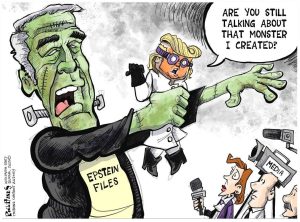Next Army is a collaborative series by CSIS Futures Lab and the Modern War Institute launched in honor of the U.S. Army’s 250th birthday and the Army Transformation Initiative (ATI). The commentaries explore how emerging technologies, organizational reforms, and major shifts in the strategic environment will shape the force of 2040 and beyond.
In the future, the United States will maintain a deep stockpile of rare earth minerals that support a ground force with larger numbers of unmanned systems and data links spread across the forward line of troops. In competition, swarms will pulse in and out of theaters, keeping adversaries off balance, denying benefits, and encouraging restraint. Deterrence will be a function not just of the lethality of this human-machine force but “combat power in being” and how adversaries assess the ability of the U.S. Army and other services to scale combat power.
The United States’ ability to deter China depends on critical minerals most Americans have never heard of. These materials have increasingly been recognized as a key economic lever of power for the United States and China. Rare earth elements are not only indispensable components of U.S. economic strength, but also of the United States’ security infrastructure. Found in everything from smartphones and laptops, they also power complex systems such as precision-guided munitions, stealth technology, and training AI models. Rare earth elements form the backbone of modern defense capabilities.
As China controls 90 percent of rare earth element processing, the United States is at an inflection point. To maintain credible deterrence against China and defend against Beijing’s ability to weaponize global defense supply chains, the United States should act quickly and reestablish a robust strategic rare earth element reserve.
From 1939 to the 1980s (prior to World War II through the end of the Cold War), the United States maintained stockpiles of rare earth elements to create a buffer against shortages and allow for uninterrupted defense production through the Strategic and Critical Materials Stock Piling Act. With the relative global calm following the Cold War, the United States sold off its stockpiles, accepting the theory that global supply chains would support rapid scaling in times of conflict. However, the Covid-19 pandemic starkly illuminated a U.S. vulnerability, exposing critical supply chain disruptions that severely impacted the United States’ ability to procure necessary materials in a timely manner.
The idea of a strategic stockpile isn’t new. The United States already maintains the Strategic Petroleum Reserve, established in the aftermath of the 1973 oil embargo, to safeguard against severe energy disruptions. It serves as an emergency buffer to stabilize markets and protect the country from the economic shocks that tend to follow geopolitical crises. The Department of Defense has consistently identified rare earth elements and critical minerals as essential to virtually every major weapons system, from fighter jets to precision-guided munitions.
A robust reserve of rare earth elements is necessary to support a policy of global deterrence, as it would signal to adversaries that economic coercion through supply chain disruption cannot prevent the United States from scaling up the defense industrial base production during a crisis. Reliance on foreign suppliers, particularly China, exposes the United States and its allies to strategic vulnerabilities. Recent history provides precedent to underscore the risk.
In 2010, China suspended its exports of rare earth elements to Japan. During a period of increased diplomatic tensions, this caused immediate disruptions in Japan’s high-tech and automotive industries. This coercive maneuver highlighted how quickly economic security can be compromised in an age of global supply chains. Drawing a parallel to the Strategic Petroleum Reserve, a similar initiative for rare earth elements would demonstrate to potential adversaries that the United States possesses the strategic depth to sustain prolonged conflict, thereby reducing the likelihood that those adversaries would initiate hostilities in the first place.
China’s near monopoly on global rare earth element processing places the United States and its allies in a precarious strategic position. Previously, the United States stockpiled up to five years of strategic materials to account for a protracted conflict and mitigate unforeseen contingencies. The stockpile also provided options to establish alternative supply routes and stand-up domestic production. Returning to a robust strategic rare earth element reserve would enhance U.S. standing in global negotiations, affirming the United States’ readiness and self-sufficiency, thereby deterring potential adversaries from utilizing resource manipulation as leverage.
Establishing such a reserve raises concerns over cost and environmental impact. While the Strategic Petroleum Reserve required billions over decades, a rare earth reserve should cost substantially less, given the smaller quantities needed while providing outsized strategic value. Critics argue investments should target supply chain diversification or alternative technologies instead. These long-term strategies have merit but cannot address immediate threats, and technological shifts away from rare earth dependency remain speculative. As for environmental impact, the United States must pursue responsible domestic production rather than perpetuate its dangerous dependence on China. Modern extraction technologies can minimize environmental costs while eliminating the far greater risks of economic coercion and military conflict invited by the United States’ current vulnerabilities.
The question is not whether to act, but how quickly the United States can implement this critical safeguard. Congress already passed legislation through Section 1411 of the 2024 National Defense Authorization Act, mandating rare earth independence from China, Russia, North Korea, and Iran by 2035. The legislative foundation exists—what’s missing is the urgency to address the United States’ dependency on foreign suppliers that demand immediate action beyond statutory deadlines. There are also other ways, such as the recently announced Pentagon investment in MP Materials, which operates an operational rare earth mine and is in the process of building a second magnet manufacturing facility.
A strategic rare earth element reserve is not a luxury—it is a necessity. The ability to deter, respond, and win in future conflicts will depend on it. The United States should act with clarity, speed, and strength—in the next fight, the availability of rare earth elements for defense production will be as decisive as soldiers on the battlefield.
Major General Jake S. Kwon is the director of strategic operations in the Headquarters, Department of the Army G-3/5/7. Benjamin Jensen is the director of the Futures Lab at the Center for Strategic and International Studies in Washington, D.C.
Jake Kwon and Benjamin Jensen
source: CSIS




